|
The N64 can really bring out the misery in all of us...
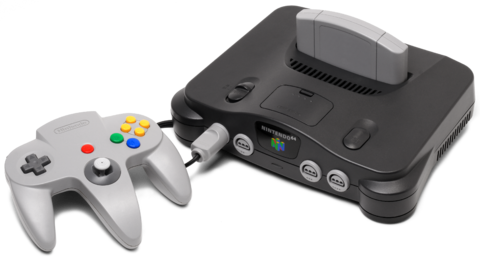
If you haven't noticed by now, we here at Micro-64 are pretty big fans of the 64-bit wonder. We have our favorite games, favorite system colors and even tend to argue over which controller was the best. We even try to defend the N64 from illogical hatred where we can, like in one of our other features, Demystifying N64 Hatred. But, we aren't blind to the N64's flaws, nor do we ignore the system's shortcomings. As much as anyone, we understand and acknowledge the N64's many, many letdowns. Between games being canceled, games being significantly changed, and moved from the 64DD to the cartridge format, it's enough to make any N64 fan rather miserable. If you're new to all of this, then you'll probably enjoy this new Micro-64 feature, The Top Ten Biggest N64 Disappointments, where we comment on the many misfortunes and broken promises that still echo through the N64's small library of hardware and software to this very day.
#10 - Removed Content in Banjo-Kazooie 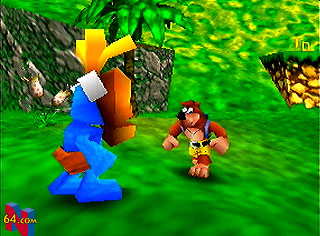
For anyone who read Nintendo Power or other game publications during the early N64 days, Rareware was something of a darling. Their upcoming games on the N64 were forever tantalizing, drool-worthy and the magazines tended to love Rareware. One of their premier games was Banjo-Kazooie. It had a fairly long development history, originally starting on the SNES as something completely different. But, most people know the game when magazines began showing pre-release and development material for the game. Between different magazines and issues, it's easy to piece together a lot of stuff that was never in the final game. Apparently, the game was to have upwards of 16 levels. The final game had significantly less than that. Some sources (including publications) state some of those levels went on to be included in Banjo-Tooie. Cut levels weren't the only things to not be used in Banjo-Kazooie either. One very infamous unused feature of the game, known as Stop 'n Swop, involved collecting items to be used to unlock items and moves in the sequel, Banjo-Tooie. While this feature has only been truly demystified in recent years, it was known about back in the N64 days. Banjo-Kazooie remains one of the N64's most popular games, so it's easy to understand how some missing content can get quite a few people's feathers ruffled.
#9 - Severe Lack of 2D Fighters 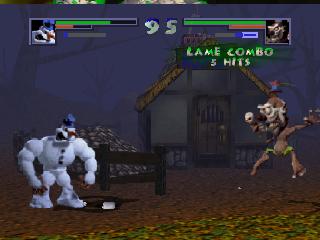
Even though 3D has been the dimension of choice since the mid 90s, when it became very widespread, quality 2D graphics still managed to linger through the rest of the '90s. One of the most popular genres in the US (both local releases and through importing) was the 2D fighting game, which Capcom still made quite a killing off of on the PS1. SNK did reasonably well with their arcade ports too. Being that the N64 was much more powerful than the PS1, many fighting game fans hoped to see some quality arcade action on the N64. In a way, this still happened. Midway released a lot of 3D fighting games on the N64, making it a decent system if you like Tekken and Virtua Fighter. But the 2D fighter was virtually unseen on the N64. The likes of Capcom and SNK were PS1 and Saturn exclusives. In fact, only a small handful of 2D fighters saw release on the N64, such as Rakuga Kids and Mortal Kombat Trilogy. There's a few more that have 2D sprites on top of 3D backgrounds, like the Clayfighter games and Killer Instinct Gold, but those aren't exactly comparable to X-Men Vs. Street Fighter or King of Fighters 96. Much like RPGs, the N64 really got the short end of the stick on 2D fighting games.
#8 - The Official Controller 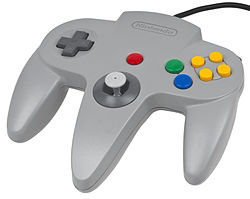
Hardly a conversation (or bashing) goes by about the N64 that doesn't involve the system's official controller, the three handled wonder. For many reasons, it ranks high on many a disgruntled gamer's list of biggest letdowns with the N64. What makes it so bad? Well, the three handles, for one. Many people felt it was unnecessary and made the controller seem more complicated than it should be. To my knowledge at least, there doesn't really exist another controller with three handles. The control stick itself tends to be a point of ridicule, all on its own. The stick wears down, gets loose and tends to feel choppy and nowhere near as smooth as it once did. Eventually, the stick will become completely floppy and can't stand up straight on its own. Other common complaints include the C-buttons, the seldom usage of the L Button and D-Pad, along with the general size of the controller being too excessive.
The reason why I place this disappointment rather low on the list is because, quite honestly, much of the hate attributed towards the controller is baseless and irrational. Almost everything about the controller can be remedied, or isn't as big a deal as people make them out to be. The stick can be lubricated while it's still stiff, the three handles don't interfere with actual use, very few games use every button and the size of the controller is really quite comfy. There are even alternatives to the official controller, such as the Super Pad 64 and the Hori Mini. Some people find far too much enjoyment in criticizing something, even when it doesn't make sense.
#7 - The Transfer Pak 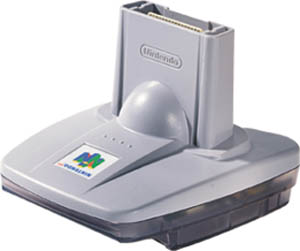
What was one of your favorite game systems as a kid? For a lot of us, it was the Game Boy. Back on the Super NES, one could buy the Super Game Boy add-on and play any Game Boy cartridge on the TV, no more batteries or fiddling with the contrast dial. This was a fantastic idea on Nintendo's part, an idea that Atari and Sega should have copied. Later on in the mid to late '90s, the N64 saw store shelves in 1996 and the Game Boy Color would eventually see a release in 1998, 9 years after the Game Boy's release. Despite the two year difference, the idea of playing Game Boy and GB Color games on the N64 seemed like a logical step forward for Nintendo. Unfortunately, many a kid would be completely disappointed by what would eventually come of this relatively simple idea. The Transfer Pak, as its name suggests, is an add-on mostly used for loading Game Boy data onto a compatible N64 game. This is all fine and well, but you can also play your Pokemon games through your N64, using the Pokemon Stadium games. Most people all had the same question, "why can't we play every other Game Boy game?" It wouldn't have been that hard, just release an N64 cartridge containing Game Boy Color hardware, kids would have eaten that up entirely. The Super Game Boy couldn't have been a more brilliant idea, and the Transfer Pak is the best successor Nintendo could come up with?
#6 - Super Mario 64 2 and Ocarina of Time: Master Quest 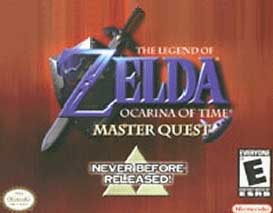
Yes yes, I know it's a bit much to include two things in one entry, but these two games hold a similar place in N64 fans' hearts. They were both follow ups of sorts to two of the N64's most well known and most successful releases. They were both intended for release on the 64DD (which is the source of all misery on the N64) and eventually got canceled. They both live on in some way though. Super Mario 64 2's game design concepts are said to have migrated to Sunshine, Galaxy and Super Mario 64 DS, particularly the multiplayer function. Master Quest was "ported" to the Gamecube, bundled with the original Ocarina of Time, but this version of Master Quest is not the same as the one developed for 64DD. Gamecube Master Quest is basically Ocarina of Time with harder dungeons. The original Master Quest is said to have been changed far more than that, with lofty goals and features, per the 64DD standard. Both Super Mario 64 2 and Master Quest were heavily rumored about in magazines and given how popular their predecessor games were, it's not surprising that these two unreleased oddities would spark a lot of bitterness among fans.
#5 - Severe Lack of RPGs 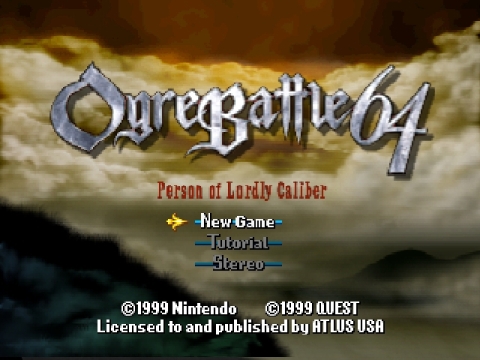
The average gamer of the late '90s is pretty familiar with this, let alone the average N64 fan. Simply put, the N64's selection of RPGs, regardless of the sub-genre, was miles behind that of the PlayStation, which in turn made the N64 a disappointment in many people's minds. But for people who kept up with the N64 since its launch, the disappointment is only more intensified. Many publications, such as magazines and game guides, had insider info on the latest up and coming releases, lots in fact were RPGs, such as EarthBound 64, Quest 64 2, Final Fantasy, Dragon Quest 7, Desert Island, Tales of Phantasia, DT 64 (aka Bloodmaster), Blades of Passage, Or Die Trying and many others. Most of these announced games simply faded into obscurity, others went on to be released, and some still exist in people's minds, thanks to sites like Unseen64, despite never seeing store shelves. Although RPGs were usually present in these lists of rumored games or expected titles, the majority ended up getting canceled. Most people think the N64 just wasn't successful enough to get any RPGs, or the cartridge format scared off all the developers, but that just wasn't the case. There were plenty of RPGs planned for release, but almost all of them ended up getting canceled, leaving just a small handful in gamers' hands. The only thing more disappointing than not getting something, is knowing you could have gotten it.
#4 - Dinosaur Planet 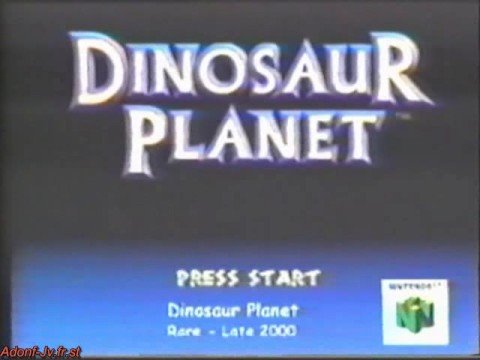
Rareware made the N64, there's not much contention over that fact. Although Nintendo had a very strong showing on the N64 (except for Metroid), it was Rareware that made the console into a living legend for anyone who warmed up to those new fangled polygons. Rareware's games had amazing graphics, excellent music, witty humor, and above all, they were FUN. Rareware was a prime innovator on the N64, right down to their final release on the system, Conker's Bad Fur Day, which remains a cult classic to the very day. Well, technically it was their last game released on the N64, but many an N64 fan are still a bit hung up about Rareware's true final game... Dinosaur Planet. This game was intended to be Rareware's swan song for the system. Conker was great and all, but Dinosaur Planet had a far more serious tone and was the sort of game anyone could play, without being grossed out. Much like Conker, Dinosaur Planet was to use a 512Mb (64MB) cartridge and feature full voice acting, something only CD systems were thought to be capable of. For a time, towards the end of the N64's lifespan, Dinosaur Planet was always listed on Rareware and Nintendo's sites as a "coming soon" release, along side Conker, Eternal Darkness, Mario Party 3, and other late releases. Dinosaur Planet was to feature an all new story, two playable characters (called Sabre and Krystal), Zelda-style adventuring and plenty of fun stuff to do, per usual of Rareware games. Unfortunately, something went wrong... Very wrong. For some illogical reason that could have only been thought up by a marketing department, Dinosaur Planet was canceled right as it was getting close to being finished, in favor of release on the upcoming Gamecube. For starters, Dinosaur Planet could probably have hit store shelves before the 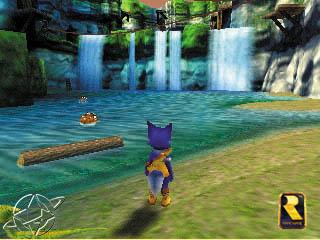 Gamecube. What's worse, Nintendo decided to toss out most of the story and levels (!) in Dinosaur Planet, and instead, add in Star Fox characters and a nonsensical plot that was literally thrown together at the last minute, under the presumption a seldom used intellectual property could better sell a game on a new console than a completely original one. They called this atrocity, Star Fox Adventures. One of the original characters, Krystal, was changed from a nice and wholesome anthropomorphic cat, to nothing more than furry bait. Her graphic design was completely changed, including her apparent age. Gone was the simple and relatively normal heroine of Dinosaur Planet, instead replaced by an alternate version with sultry curves and less clothing. She, for obvious reasons, remains very popular among fans. To add insult to injury, Nintendo relegated her to a background character. All of her levels were either converted over to Fox (who replaced Sabre, the other main character of DP), or removed entirely. The story is even more ridiculous. To keep with the Star Fox theme, Nintendo included other planets for Fox and friends to explore, which completely destroyed the whole point of Dinosaur Planet (at least Nintendo eventually dropped the Dinosaur Planet name as a subtitle). The main villain of Star Fox, Andross, was hastily tacked onto the end of the game, which significantly disrupted what little remained of Dinosaur Planet's plot. Gamecube. What's worse, Nintendo decided to toss out most of the story and levels (!) in Dinosaur Planet, and instead, add in Star Fox characters and a nonsensical plot that was literally thrown together at the last minute, under the presumption a seldom used intellectual property could better sell a game on a new console than a completely original one. They called this atrocity, Star Fox Adventures. One of the original characters, Krystal, was changed from a nice and wholesome anthropomorphic cat, to nothing more than furry bait. Her graphic design was completely changed, including her apparent age. Gone was the simple and relatively normal heroine of Dinosaur Planet, instead replaced by an alternate version with sultry curves and less clothing. She, for obvious reasons, remains very popular among fans. To add insult to injury, Nintendo relegated her to a background character. All of her levels were either converted over to Fox (who replaced Sabre, the other main character of DP), or removed entirely. The story is even more ridiculous. To keep with the Star Fox theme, Nintendo included other planets for Fox and friends to explore, which completely destroyed the whole point of Dinosaur Planet (at least Nintendo eventually dropped the Dinosaur Planet name as a subtitle). The main villain of Star Fox, Andross, was hastily tacked onto the end of the game, which significantly disrupted what little remained of Dinosaur Planet's plot.
If you've ever wondered why Rareware fans tend to be a bit sore about the company's spiral down the toilet, Dinosaur Planet is a good place to start. Fun fact: Dinosaur Planet started out as a sequel to Diddy Kong Racing.
#3 - Mother 3 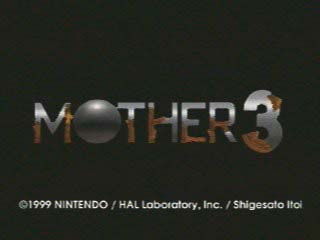
EarthBound continues to be a very unique series in many ways, mostly due by the rabid fanbase. To many a fan, the most intriguing and even more aggravatingly disappointing is the 64DD game known as Mother 3, sequel to the sleeper SNES hit nobody played, Mother 2, known as EarthBound in the US. Although EarthBound didn't sell enough to reach Player's Choice status or even drum up much interest with the publications, the fanbase for Mother in general became pretty huge by the time Mother 3 was put into development. This largely unknown and highly sought after unreleased game was going to be released on the 64DD, back when the N64 still had potential against the juggernaut PS1. Shigeru Miyamoto even said at one point that Mother 3 would be one of the 64DD launch titles. Much like its preceding series entries, Mother 3 was going to be an off-beat RPG adventure for the quirky-minded gamer. What is even stranger, is Mother 3's plot and setting were going to be rather distant from the previous two games, which were based on almost the exact same kind of story, setting and even characters. This alone got a lot of people interested, but Mother 3 also boasted a unique battle mode and a real time clock, something that was a big deal with 64DD games. Although everyone waited anxiously for the release of the 64DD, and subsequently, Mother 3, the fans would eventually be played for fools. After being in development for much of the N64's shelf life, Mother 3 was canceled in 2000, apparently due to low quality of the game, large amount of bugs and the development team's lack of experience with 3D graphics. Shigesato Itoi, series creator, posted a letter of apology 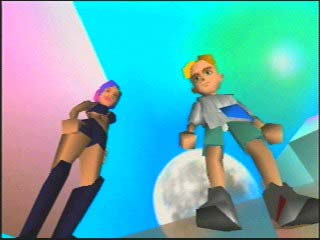 to all fans online, and left some pictures and some fond memories of the game's development. It was really quite sad, actually. Fans were so bothered by the game's cancelation, many of them sent snail mail letters and a petition to Shigesato, in the hopes the game would be released anyway. Unfortunately, not even support from fans was enough to save Mother 3. The game remained canceled and the 64DD itself suffered a similarly depressing end. to all fans online, and left some pictures and some fond memories of the game's development. It was really quite sad, actually. Fans were so bothered by the game's cancelation, many of them sent snail mail letters and a petition to Shigesato, in the hopes the game would be released anyway. Unfortunately, not even support from fans was enough to save Mother 3. The game remained canceled and the 64DD itself suffered a similarly depressing end.
The story does sort of have a happy ending though. 6 years later, a vaguely related game, also titled "Mother 3", was released on the Game Boy Advance in 2006. Although this game was released, it was never let loose outside of Japan, despite tons of raging and very vocal fans demanding the game's overseas release. Although that never happened, those same fans ended up making their own fan translation of the game. Nintendo was at least nice enough to not cease & desist them.
#2 - The 64DD 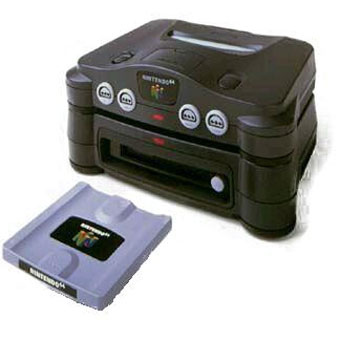
This, without any contest or contention, takes the proverbial cake. The 64DD is by far the biggest letdown on the entire N64. How bad was it? Well, to start off, the 64DD was announced before the N64 was released. That's a pretty big deal. Right from there, publications pumped the 64DD as the add-on that would save the N64 from its cartridge bottleneck. The general populace became enthralled by this magnetic-optical disk drive. Those magical 64MB disks were miles ahead of the typical 4MB cartridges at the system's launch. But, those dreams would eventually become completely dashed, for the 64DD mostly existed in development hell while the N64 struggled alone. When was the 64DD released? Well, it wasn't 1996, that's for sure. 1997? Nope. 1998? Guess again. 1999? Bingo, that's when the 64DD was eventually released. More specifically though, it was released in December of 1999, so it might as well have been 2000. That's when almost all of its games were released anyway. Yeah, you read that right. The 64DD was such a roaring success upon its extremely late launch, well after the N64 had any kind of marketability or consumer merit, that only 9 software disks were released. Yes, only 9. I would use the word "video game", but honestly, some of the released games weren't really games in the typical sense of the word, like the Mario Artist games (especially the Communication Kit). Two of the games were actually expansion packs, which further makes the 64DD library seem like a total waste. Besides the complete lack of software support, the 64DD had everything a really marketable add-on needed, like ahead-of-its-time online support (akin to the Sega Channel), a unique media format, lots of big name titles in the works and plenty more hidden potential... But that all vanished into thin air as the years waned on, past every release date the 64DD ever had. By 1997 even, people began to realize the 64DD wasn't in any particular hurry to see a release. As 1998 and 99 rolled around, more and more 64DD games got converted to the cartridge format, further cementing the 64DD as vaporware in the minds of N64 fans. While the released system had the online support and the interesting media format, the 64DD was canceled so quickly that the online service was quite pointless and would have felt like a waste of money to anyone. In fact, the entire 64DD was a waste. A complete and utter waste. With so few units produced, so few games released and such an extremely late release, the 64DD felt like a slap in the face to anyone who supported the N64 with their dollars, in the hopes the 64DD would see a release. I'm sorry, but the F-Zero Expansion Kit is not enough to save the 64DD from complete and total shame, much less a reason to spend almost $1000 on a 64DD system. I almost dare say, the 64DD would have been better off unreleased entirely...
The Virtual Boy ain't got nothing on that.
#1 - The Cartridge Format 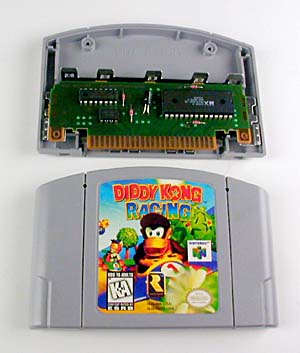
Okay... Maybe the 64DD isn't the be all and end all of the N64's atrocities. In some ways, the cartridge had an even bigger effect than the 64DD, which is saying a lot. Taking a moment to reflect on anything having to do with the cartridge of the N64, quickly makes it clear that the N64's media format was the biggest letdown of them all. For starters, had Nintendo used a CD-ROM drive in the N64, many third parties from the NES and SNES days might have stuck with the N64, instead of risking Sony's Playstation. Additionally, the CD-ROM drive could have alleviated some bottlenecks of the N64, such as the small texture cache, poor sound quality, blurry graphics (maybe) and severe lack of ROM data capacity for games. In fact, had the CD-ROM drive become a reality, the 64DD would have had no reason to exist. First, second and third party games might have seen significant improvements in quality, as a result of more storage (load times would have sucked though). Furthermore, the fate of Nintendo as a company might have been significantly swayed with the use of the CD-ROM. Nintendo might have used actual DVDs with their Gamecube, the Wii might not have come into existence... Heck, Nintendo might have ended up partnered with Sony, in this alternate universe... But, that brings me to the issue with this letdown. As much as people berate the N64's cartridge format for severely handicapping the system, it couldn't have been any other way. Nintendo's backdoor dealing with Phillips (and possibly other companies) caused Sony to drop their already violated contract with Nintendo, and as a result, Sony developed a more advanced box of their own and fought Nintendo on their own turf. In short, the cartridge was fated to happen, and as such, from that viewpoint, the cartridge doesn't seem nearly as big a deal as people make it out to be. But, taking consideration for general irritation with the various suggested disappointments for this list, the honor of biggest letdown in all of N64 history, goes to the cartridge.
Written By: Aaron Wilcott
December 15th 2012
|